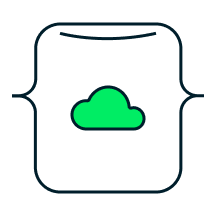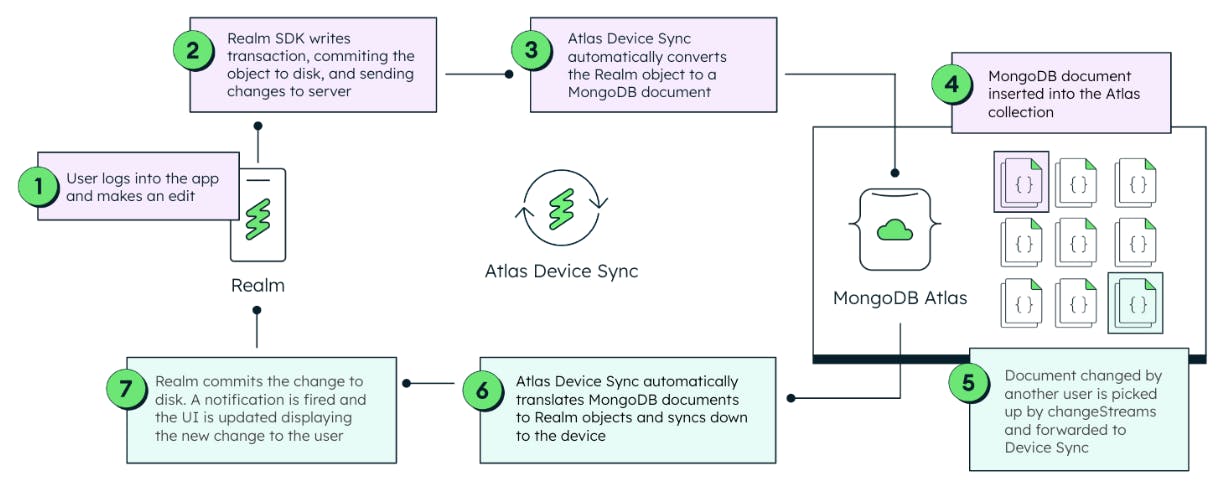Better Inventory Management With MongoDB Atlas, Atlas Device Sync, and WeKan

Mobile technologies can be powerful enablers of an improved retail experience, both for customers and for employees. Using mobile devices, staffers can check in on an app rather than physically signing into their workplace. Order management and order tracking can be greatly improved with mobile technologies, offering customers increased assurance and predictability.
One of the largest challenges faced by retailers — and one where mobile technologies are ideally suited to help — is inventory management. Poor inventory management leads directly to lost revenues, because retailers cannot fulfill orders if they don’t know what they have. Some 70% of store associates are unable to fulfill an order that is out of stock at their location. In this article, we’ll look at how mobile technology, connected to a central database, can improve inventory management and provide key functionality throughout an organization.
Inventory challenges
Inventory management is exceptionally complicated, especially for retailers that have roots in brick and mortar. Even a medium-size retailer may have dozens of physical locations and multiple warehouses. When an order comes in, the information must be sent to the appropriate warehouses, and the warehouse managers need to know which items should go to which stores. When e-commerce is layered on top of that, workers pick and pack items directly from the warehouse, in addition to managing returns. Worse, more than 16% of online orders are typically canceled.
If a store manager orders a particular style of shoe, for example, they want to be able to see when those shoes are going to arrive. However, this information is typically compiled in batch mode at the end of the day, which can result in lags and inaccuracies. Additionally, if the various inventory systems aren’t communicating well, a store manager may not see that an order has been returned or canceled. They may think the item is out of stock — even though it could be sitting on a shelf.
Such difficulties can be the result of fragmented technologies. Warehouses may have their own systems, point-of-sale systems may be a separate technology, and inventory management may be completely independent. This fragmentation doesn’t even begin to take into account the systems that help the store managers with operations and the delivery infrastructure. Some of these systems may be modern, some may be legacy, but without being connected to a central data layer, the information contained within them remains siloed and therefore of limited value.
Mobile technology, connected to a central database, can unlock that information and provide important new functionality to employees throughout an organization. It can tell the shop manager that their shoes will arrive in the next hour. And it can tell them that, based on data from the point-of-sale system, they’re running out of women’s socks in size small, for example, and need to replenish their stock.
Central data layer
Conceptually, the solution is simple: A central data layer that is able to talk to all these different components on a real-time basis and then cascade the information to different applications using mobile devices to feed off of the database. The data layer and the local clients must be interoperable and available regardless of network availability and other challenges. The data required for the mobile app should be on-device and should be synced with the database server.
The data layer is the backbone of this entire system. It needs to be flexible, because it will be asked to ingest wildly different forms of data. A retailer may have millions of SKUs that need to be managed, along with prices and special promotions. This information changes frequently, so the data layer must be able to manage a very high volume of data, and the data must be easily transformed to work in one central system that other devices can easily access. According to research from Incisiv, 70% of workers do not sit at a desk, and 79% of the retail workforce are digital natives, meaning that the data layer must be interoperable with any number and type of mobile devices.
MongoDB and WeKan, working together, use MongoDB Atlas as that central data layer with Atlas Device Sync to connect data between mobile devices and the cloud. WeKan — an IT consulting company offering end-to-end transformation and technology innovation services — has been building mobile solutions since 2015, and has deep experience with Atlas and Atlas Device Sync.
MongoDB has partnered with WeKan because of its consistent success in helping customers in industries such as retail, manufacturing, and automotive modernize their tech stacks and their business ecosystems, paving the way for valuable innovations.
The combination of MongoDB Atlas and Atlas Device Sync provides significant advantages to joint customers, including:
-
Out-of-the-box, robust sync protocol: When a sale is made, data from the point-of-sale system is synchronized to the cloud and then sent to all the other devices that need the information in real time. No matter how an employee is accessing the data, they can be assured that it is the most up-to-date.
-
Efficient data consumption from the mobile client: It’s important that any solution be specifically tailored for mobile devices. A generic cloud-based solution is not necessarily mobile-friendly, which means that it may not be efficient in terms of data consumption, battery-life or storage optimization.
-
Flexible schema: A flexible data structure allows businesses to ingest data quickly, innovate, and be free from the rigidity of relational systems. Warehouse teams may need one view of the data, while delivery teams need a completely different view. A flexible schema allows for fluid processes and helps each team get the data access it needs.
-
GraphQL and auto-generation of endpoints: Endpoints talk to the data layer so that an API can fetch data from it. Most developers have to build those endpoints, but with Atlas Device Sync clusters, the endpoints are generated automatically.
-
Triggers and functions: Certain aspects of MongoDB Atlas and Atlas Device Sync can be set up to be serverless. If you want to move data between Atlas and another system, you can use triggers to send the data and then send notifications based on the changes.
-
Data access permissions and user authentication: This functionality is available out of the box with Atlas and Atlas Device Sync, which saves developers valuable time.
Because MongoDB Atlas and Atlas Device Sync provide a fully managed, out-of-the-box implementation of device-to-cloud data synchronization, creating and maintaining a high-quality, reliable application fit for business-critical use cases is simple. Below, we illustrate how updates from client and server are handled automatically:

Enabling e-commerce at a leading retail chain
In one successful use case, a massively complex retail organization that operates, franchises, and licenses thousands of stores globally used MongoDB Atlas with Atlas Device Sync to build innovative functionality for its e-commerce application. The application allows customers to browse a product catalog connected to their local store’s inventory, make purchases on their mobile devices, and schedule in-store pickup or delivery. To provide the best customer experience, the mobile app obviously requires accurate, timely, and granular inventory data.
As part of their technology modernization initiative, this retailer also brought custom mobile devices into 10,000 stores across the United States and Canada to better scan and manage inventory. With the new functionality, store employees can now call customers directly about order statuses and clarifications. The result is a better customer experience, increased mobile sales, and extensive data analytics capabilities that can foster further improvements.
Inventory management is exceptionally complicated and frequently made worse with separate, fragmented technologies. Could improved inventory management bring in more revenue for your business? Learn more about WeKan or contact MongoDB at bd@mongodb.com.